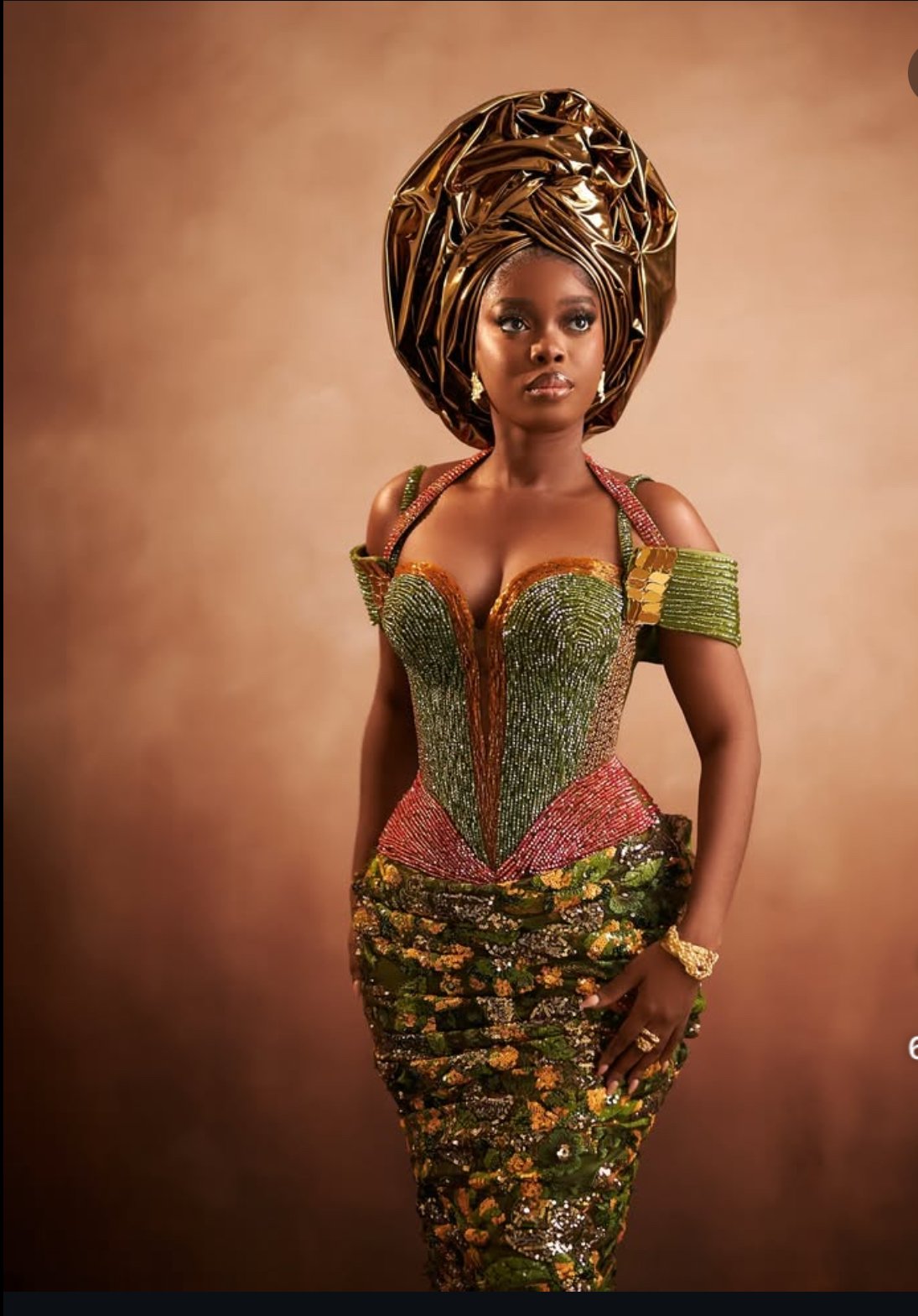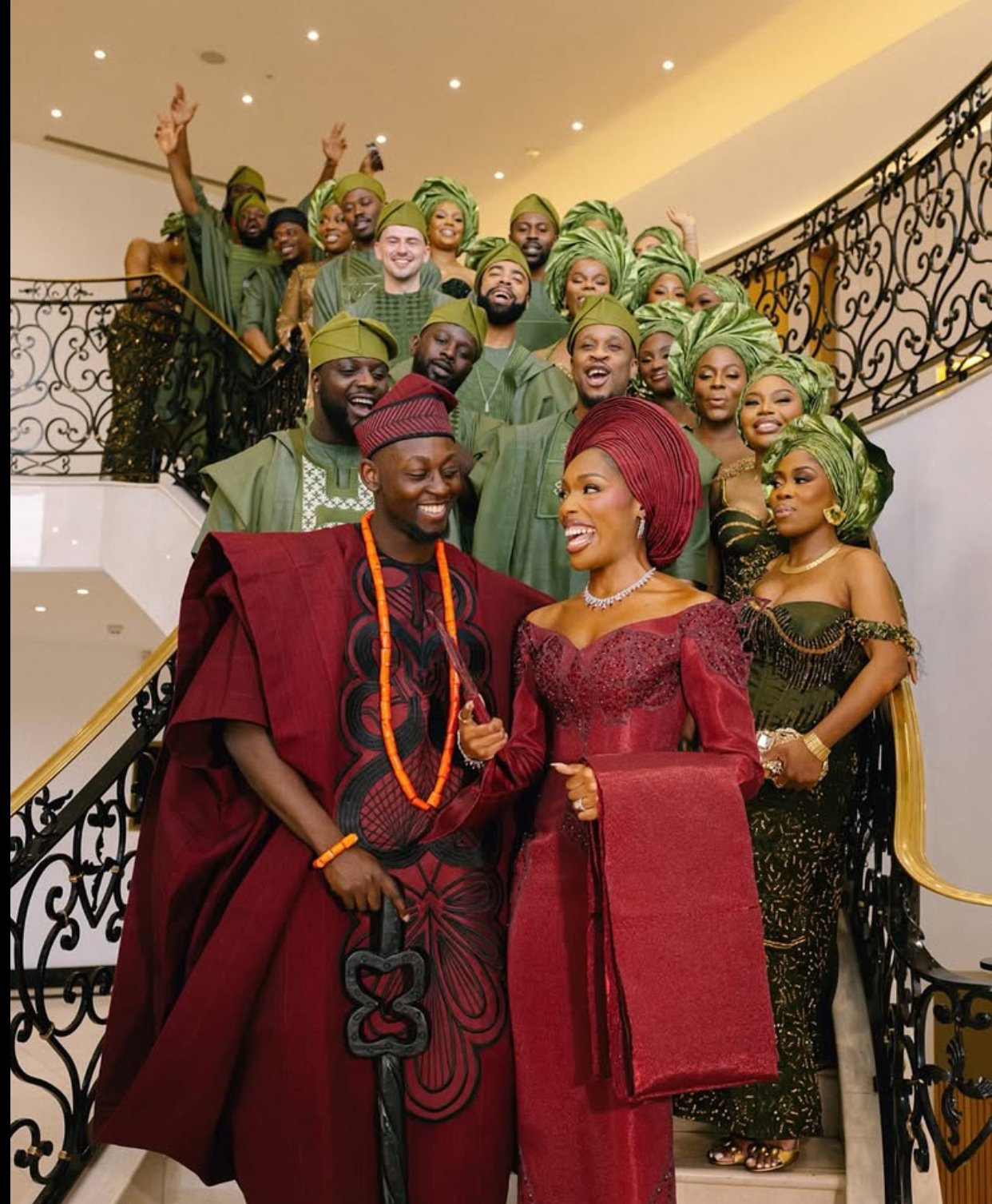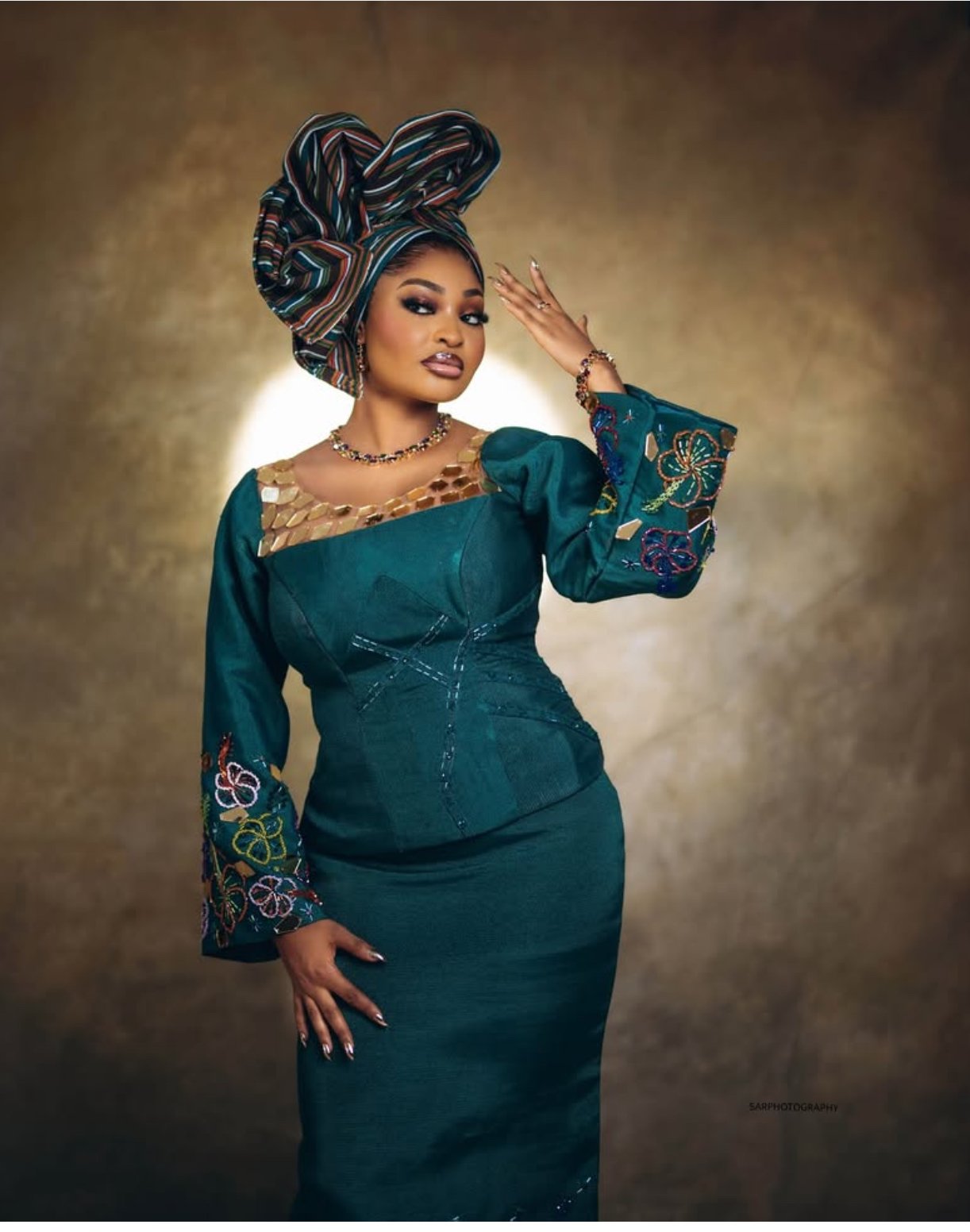The Crown of Culture: Why Gèlè and Fìlà Are Essential in Your Asoebi Attire.
In Yoruba culture, fashion is never just about fabric — it’s about identity, pride, heritage, and the story you wear. Among the most iconic elements of Yoruba traditional wear are the gèlè for women and the fìlà for men. These headpieces are not mere accessories; they are cultural symbols that carry deep meaning, elegance, and a sense of unity. But why are they so important?
1. A Mark of Respect and Tradition
In Yoruba land, dressing well — especially during ceremonies — is a sign of respect, both to the hosts and the ancestors. The gèlè and fìlà are essential components of formal attire, especially during events like weddings (owambes), naming ceremonies, funerals, and festivals. Wearing them shows reverence for tradition and acknowledges the cultural expectations of appearance and decorum.
Photocredit: @olamide_david
2. A Symbol of Identity and Pride
The Yoruba people are known for their rich cultural expressions, and nothing says “I am Yoruba and proud” like a well-tied gèlè or a properly placed fìlà. These pieces are often made from aso-oke, damask, or other richly textured fabrics that reflect local artistry. When you wear them, you wear your identity on your head — literally.
Photo credit: @tin_glamour
3. Unity in Asoebi Culture
In modern Yoruba ceremonies, especially weddings, asoebi (coordinated outfits) creates a sense of community and belonging. Gèlès and fìlàs are often matched to the color and fabric of the chosen asoebi, giving the group a uniform and regal look. The headwear ties everything together — without it, the outfit often feels incomplete.
Photo credit: @timioshinstudios
4. A Crown of Elegance and Creativity
Gèlès are not just tied; they are sculpted. Each woman brings her personality to the fold — some go big and dramatic, others subtle and sleek. The art of gèlè tying has even become a profession on its own, with stylists creating stunning, gravity-defying designs. Fìlàs, on the other hand, offer a masculine touch of grace and can be folded in various ways — slanted, straight, or pinched — all subtly signaling style or status.
Photo credit: @sarphotography
5. A Modern Expression of Ancient Beauty
Today, gèlès and fìlàs have gone global. From Lagos to London, New York to Ibadan, Yoruba headwear has been reimagined in fashion shows, music videos, and red carpets. Despite evolving trends, their roots remain firmly in Yoruba heritage — and wearing them keeps that heritage alive, stylish, and strong.
In Conclusion
Gèlè and fìlà are not just fabric — they are crowns of culture, worn with pride and purpose. Whether you’re the bride’s best friend at an owambe or the patriarch at a chieftaincy ceremony, these headpieces speak before you do. They tell the world who you are, where you’re from, and what you stand for.
So next time you tie that gèlè or adjust your fìlà, do it with confidence — you’re not just dressing up; you’re wearing history.



